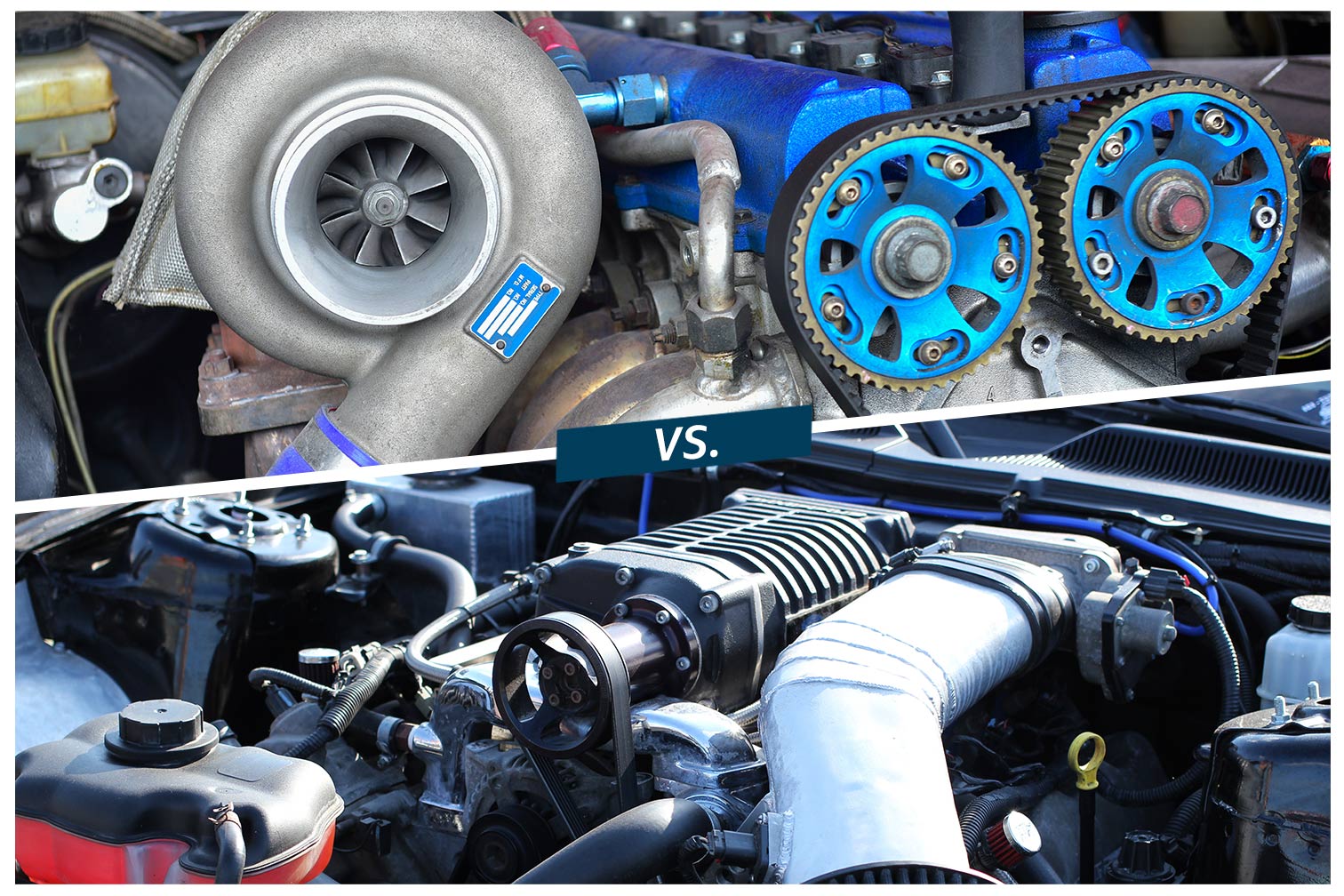Turbocharger vs Supercharger: Which is More Efficient?
When it comes to these two performance boosting technologies, efficiency is one factor to weigh as you consider which to get.
 Shutterstock
Shutterstock
When you want to boost a vehicle's engine performance, a great way is to literally give it a boost. Turbochargers and superchargers both work by forcing more air into an engine than it could otherwise get. Both technologies go back more than a hundred years, finding their first application in early airplane engines as a way of maintaining power in thinner air at higher elevations. More oxygen and more fuel to burn in an internal combustion engine equals more power.
The basic difference is that a supercharger is actually powered by the engine it's attached to, while a turbocharger takes advantage of the engine's exhaust gases and uses them to spin the turbine and pump the air into the engine.
Turbocharger vs. Supercharger: Which is More Efficient?
The design of a supercharger, which pulls its power from the engine, actually hurts efficiency by adding to the engine's load. That typically shows up in lower fuel economy averages. Beyond that, superchargers work best with large, already powerful engines. And that hurts the fuel economy even more.
A turbocharger on the other hand, is taking a byproduct of the internal combustion process, exhaust, and putting it to use before it's sent out of the tailpipe. Those gases aren't dependent on the power of the engine. Turbochargers are more effective at getting higher power out of smaller engines that, without a turbocharger, might not produce much horsepower. A turbocharger won't improve an engine's fuel economy, but it will get more horsepower out of a smaller, more fuel-efficient engine.
When comparing turbocharger vs. supercharger, you're more likely to find a fuel efficient vehicle powered by a turbocharger than a supercharger.
Turbocharger vs. Supercharger: Driving Experience Differences
Those are the on-paper differences, but what about on the road? Turbochargers and superchargers are not only designed differently and work differently, but they drive differently as well.
The direct connection of a supercharger to the crankshaft means as soon as the accelerator is pushed and the crankshaft turns faster, so does the turbine in the supercharger. Response is immediate. In any and all driving conditions, the supercharger is always on, so when your right foot calls for more forward momentum, you get it right now.
With a turbocharger, as the engine speed increases, so does the amount of exhaust gas driving the turbine. Even with the most advanced turbochargers, the unit is only most effective within a certain rev range. When you hit that level of engine speed, then the turbine is able to spin fast enough to force more air, and fuel, into the engine. It happens quickly but not instantaneously, resulting in what is known as "turbo lag"—putting your foot down and not getting a burst of acceleration for a second or two.
Though there is a delay, it's one that can work in the favor of efficiency for turbochargers. While a supercharger is always spinning and putting in more fuel and air, if a turbocharger only works above a certain engine speed, it's possible to cruise with the efficiency of a smaller engine and then have the performance of a more powerful one when desired. It's as easy as a push of the accelerator and the change of a gear.
Because of those differences, the decision of whether to choose a turbocharger or a supercharger for performance is a bit complicated. If instantaneous speed is the number one priority, a supercharger could be the right choice. But if fuel economy plays a part in your decision, turbochargers have become today's default solution for higher performance without lower gas mileage.
Written by humans.
Edited by humans.
 Mike Hagerty
Mike HagertySorting through the hundreds of new car, truck and SUV choices on the market to find the right one for your needs gets tougher all the time. I'm here to help. I've been writing and talking about new vehicles for 25 years on TV and radio, in print and online. And my passion for cars and driving goes back even farther than that. I love design and performance, but the second-largest purchase most of us will ever make (for some of us, the largest) needs to be based on more than good looks and quick zero-to-60 times.
Related articles
View more related articles